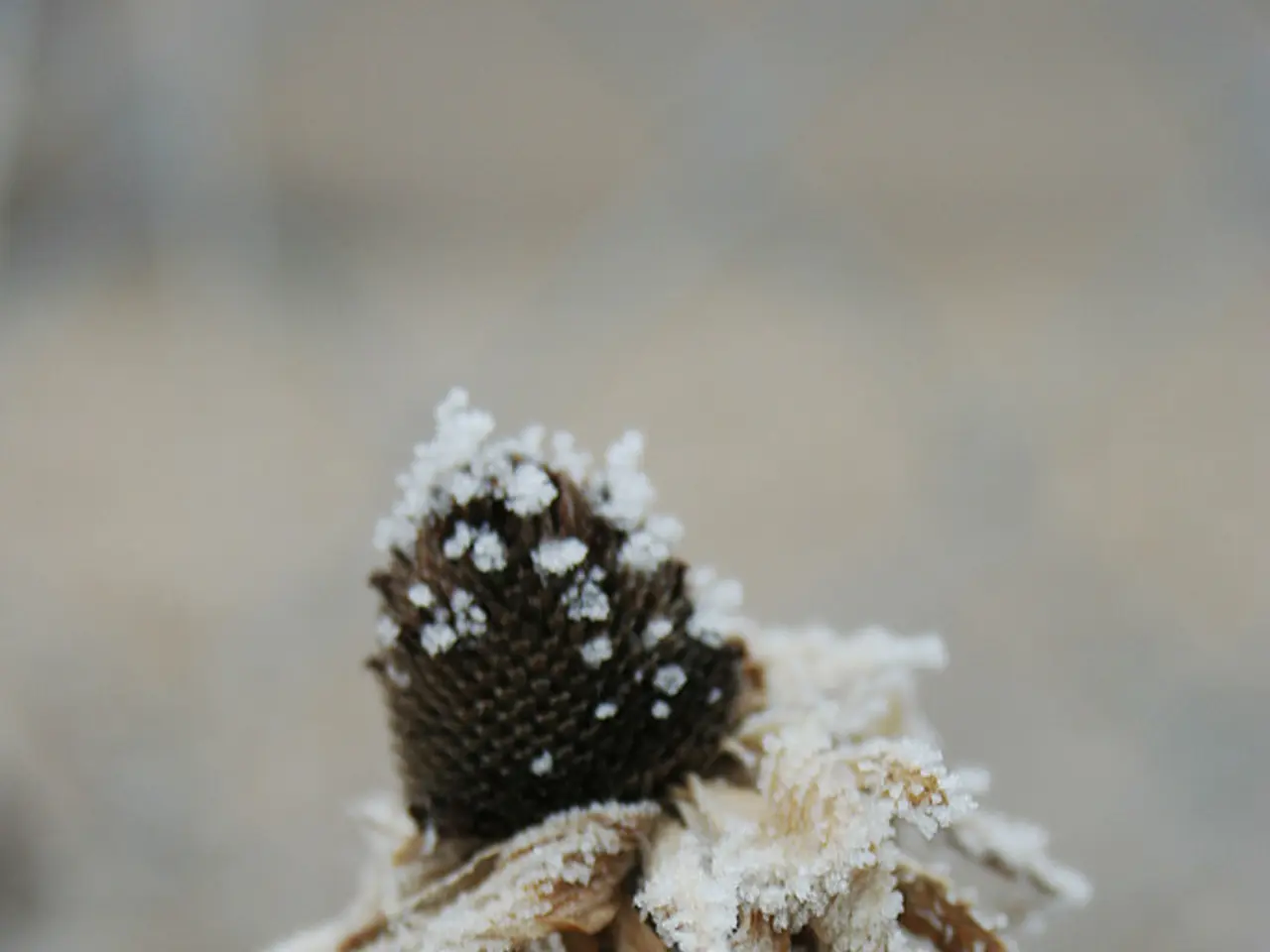Dealing with Winter Ailments: Overcoming Winter Burn and Frost harm to Plants
In the colder months, plants can face several challenges, from sudden weather shifts to prolonged severe conditions. This can lead to issues such as tissue deaths, scorched leaves, winter burns, and frost damage. But don't despair! With a few simple steps, you can help your plants weather the winter season.
Firstly, preparing your plants for the winter is crucial. Adding fertilizer to the soil early in the spring can help plants absorb more nutrients, making them more resilient during the fall and winter season.
When it comes to preventing and treating winter damage, a combination of protective coverings, environmental management, physical barriers, and cultural practices is key.
Frost damage can be minimized by covering plants, especially fruit trees, with frost blankets or frost shields during cold spells. Watering the soil before freezing nights can help retain heat in the root zone. To prevent premature deacclimation, keep plants cool but above freezing during late winter to prevent damage when they are vulnerable.
Winter sunscald, a condition where the tree bark cracks due to sudden temperature changes, can be prevented by wrapping tree trunks, especially thin-barked or young trees, with protective tree wraps or guards.
Broken branches and stems are common after a snowstorm. Pruning damaged or weak branches before winter can reduce the risk of breakage under snow or ice load. After damage occurs, prune back broken limbs promptly to prevent further injury or disease.
Winter desiccation, or drying out, can be addressed by applying anti-desiccant sprays on young or exposed evergreens in late fall. Mulching around plant bases helps retain soil moisture and regulate temperature, reducing desiccation stress.
Burrowing animal infestations can occur during winter when food is scarce. Installing physical barriers such as wire mesh or hardware cloth around trunks or at the root zone can deter rodents or other burrowing pests. Maintain clean garden beds in spring to detect and repair damage early.
Overall, maintaining good winter care involves managing temperature fluctuations inside structures (if applicable), applying mulch, cleaning winter debris, and monitoring plants regularly to catch issues early and adjust protection strategies accordingly.
Laying a generous layer of mulch on the soil before winter can help protect plants from cold temperatures and evaporation. Watering plants generously during the winter season can help them recover from the cold and provide nourishment for growth and healing.
Clustering container plants near homes or in sheltered spots can help keep them away from the punishing cold. Remember, pruning plants only as needed is recommended, as heavy pruning can worsen damage and make foliage more vulnerable to future frosts and hard freezes.
In regions with varying climates and plant species, winter burns and frost damage are common. Prevention includes hardening off plants early in the season, timing pruning well, and using organic fertilizer.
By following these tips, you can help your garden weather the winter season and emerge healthier and more vibrant in the spring. Happy gardening!
[1] Gardening Know How [2] The Spruce [3] Garden Myths [4] Garden Guides [5] University of Illinois Extension
- To ensure a healthy lifestyle for your home-and-garden during the cold months, lay a generous layer of mulch on the soil before winter to protect plants from cold temperatures and evaporation.
- In the home-and-garden sector, preventing and treating winter burns and frost damage involves a combination of protective coverings, environmental management, physical barriers, and cultural practices, such as watering plants generously during the winter season to help them recover from the cold and provide nourishment for growth and healing.





